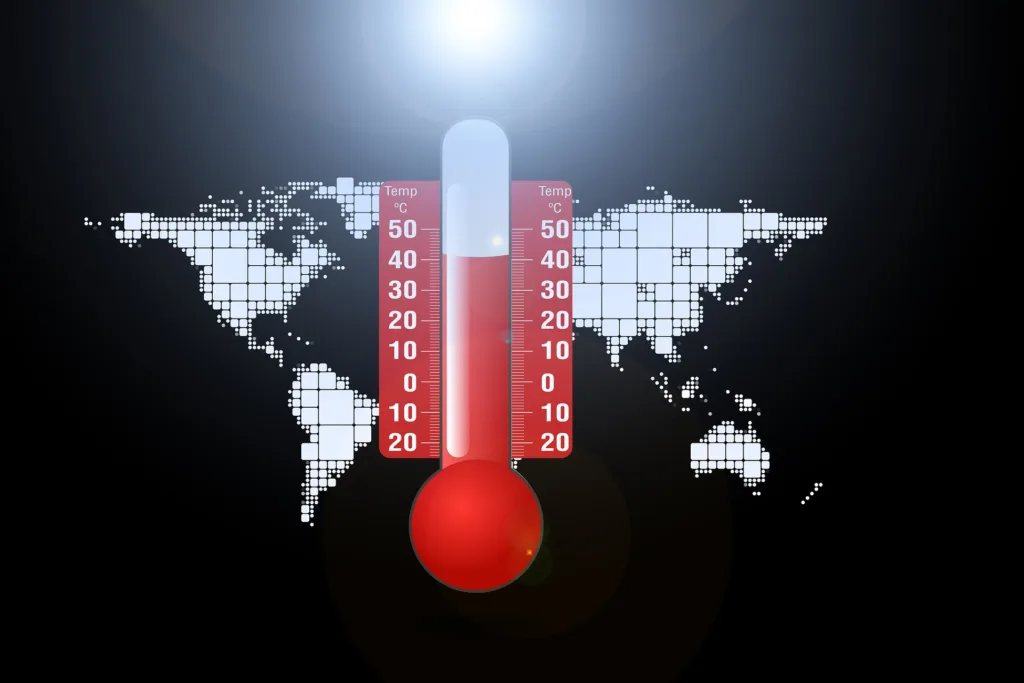The signs 2023 would be a record breaker were there from the start. 360info has the statistics.
 2023 was the hottest year on record. : Pixabay Pixabay Licence
2023 was the hottest year on record. : Pixabay Pixabay Licence
The signs 2023 would be a record breaker were there from the start. 360info has the statistics.
2023 was the hottest year on record.
As 360info analysis of European data found in early December, the first 11 months of 2023 were so hot that December would have had to break all sorts of cold weather records for 2023 to avoid being the hottest year ever.
December would have needed to be nearly 0.25°C colder than any recorded in the last 80 years in order for 2023’s average temperature to avoid breaking the current record from 2016.
That was always unlikely, and the scientists at Copernicus made the call at the start of December, declaring 2023 the hottest year on record.
The declaration follows the World Meteorological Organization, which made the same call just days earlier, saying 2023 “shattered climate records, accompanied by extreme weather which has left a trail of devastation and despair”.
The signs 2023 would be a record-breaker were there from the start. Wind back 11 months to when Europe had its warmest January on record, the eastern United States’s winter was among its warmest ever and the sea ice at each pole was at record lows for the start of the year.
Things really began to heat up in May and June, which was the warmest June on record since scientists began keeping track in the 19th century.
By the July, in the midst of the northern hemisphere summer, heat records were falling around the world. August was the hottest on record and so was September.
Heat is the silent killer of thousands each year and is only going to get worse.
Research has demonstrated that a ‘wet-bulb’ temperature of 35 degrees Celsius or higher would make it impossible for humans to exhaust metabolic heat, due to our fixed core body temperature.
One story that dominated climate headlines in 2023 was El Nino. Would there be one or would there not?
After three consecutive La Ninas and, as the northern hemisphere sweltered for the second year in record temperatures, in early July the World Meteorological Organization declared an El Niño was underway, increasing the likelihood of hotter temperatures in many parts of the world.
Australia’s Bureau of Meteorology followed suit in September.
El Niño and La Niña events are likely to get stronger over the next few decades before possibly weakening towards the end of the century, new research predicts.
It was not only on land that things heated up. The ocean has too.
Marine heatwaves have become more prevalent and widespread over the past two decades and in 2023 records were broken in oceans around the world, which could have devastating consequences for marine life.
The effects of marine heatwaves can be significant, impacting marine ecosystems and coastal communities that rely on the oceans for sustenance and livelihoods.
Apart from resulting in the loss and/or the degradation of ecosystem services, the most significant repercussions of marine heatwaves are in marine organisms.
These include unprecedented mass deaths of marine species, seabirds, kelp forests, seagrass and other coastal vegetation.
With heat record being broken, solutions are urgent.
The Intergovernmental Panel on Climate Change’s 2022 report, Mitigation of Climate Change, makes it clear that no one technology can reduce humanity’s carbon emissions enough to get to net zero.
But action is needed. And quickly.
Originally published under Creative Commons by 360info™.
This article has been republished for Climate Outlook 2024 package. It was first published on 11 December, 2023.









